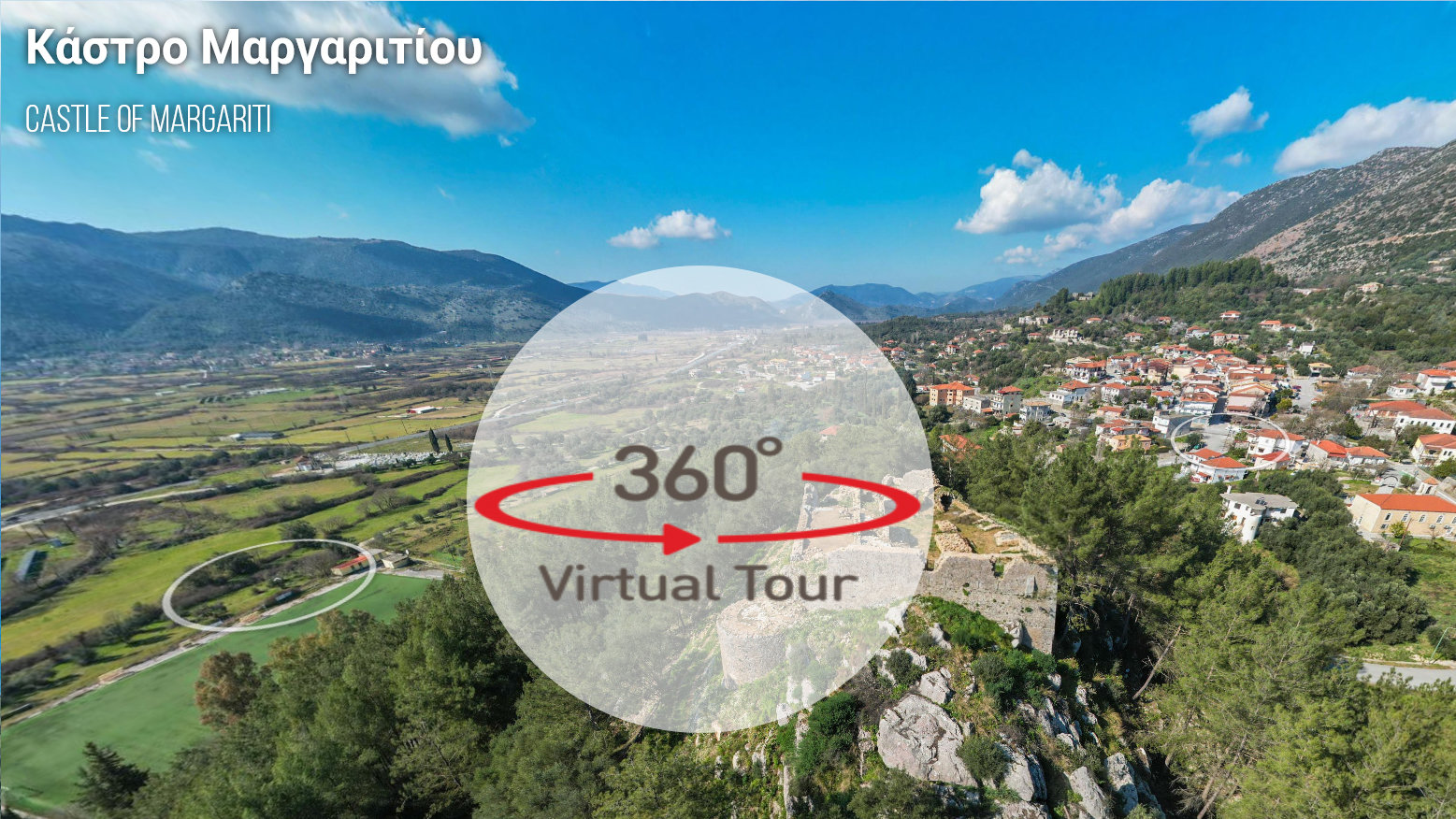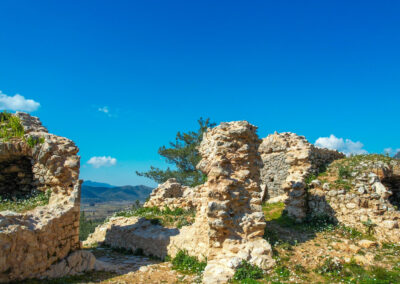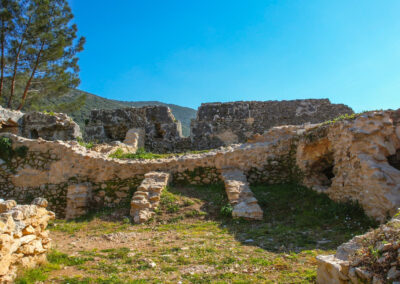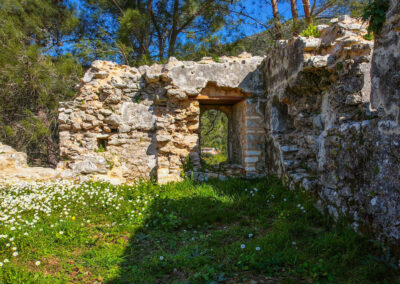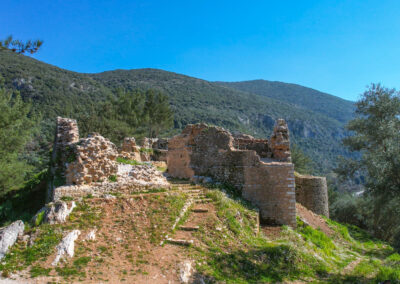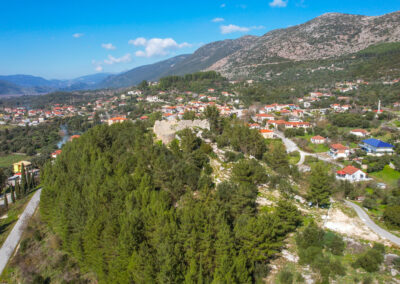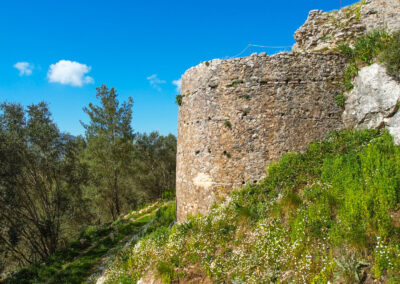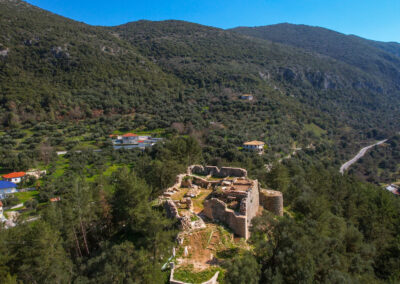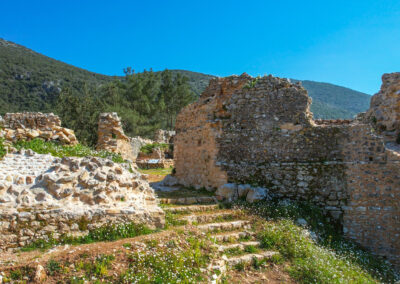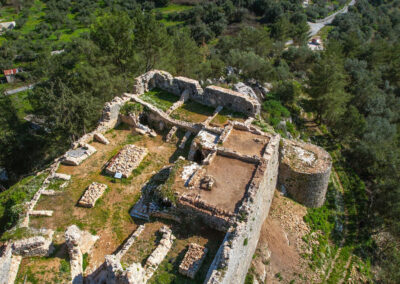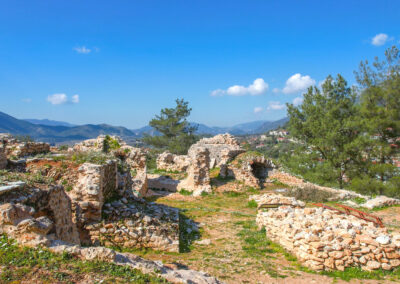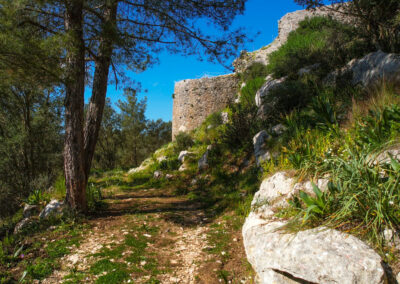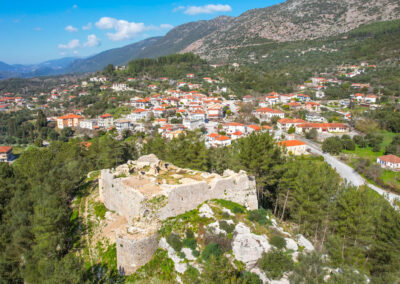Castle of Margariti
The castle of Margariti is located on a low hill south of the modern settlement. It was constructed around 1549 by the Ottomans, in order to reinforce their territories against the threat posed by the Venetians who had settled along the coast of Epirus.
Provocative actions against Venetian Parga by the guards at Margariti resulted in a combined attack in 1571 on the recently constructed Ottoman castle. The forces under the command of Paolo Orsini included 6,000 Venetians, Corfiots and local units from Parga and Paramythia. This led to the occupation and destruction of the castle, with the event depicted in a painting by the Greek artist Antonio Vassilacchi from Milos, a student of Tintoretto, who was present during the battle.
After the conclusion of a peace treaty in 1573, Parga remained under Venetian rule and Margariti under the Ottomans, who proceeded to carry out repairs on the fortress.
During the 17th century, Margariti was still an important defensive site in the area. In 1669 it was reported that it had 8 canoneers (topciyan) and a guard of 40-50 janissaries. Evliya Tselebi visited the area between 1670-71, describing with obvious exaggeration, the fortress as pentagon-shaped with a perimeter of 520 m and a guard of 200.
During the 18th century, Margariti was under the rule of Suleiman Tsaparis, head of a large family which dominated the area until the first half of the 19th century, and who owned most of the land around the settlement. At the same time, Margariti was reported as the centre of riots and uprisings against the Ottoman Gate and as the hub of anti-government conspiracies.
In 1811 the area came under the control of Ali Paşa Tepelenë. Although there is no direct evidence, it is almost certain that the castle continued to play an important role in historical events and the continuing wars in the area, used mainly as a base for attacks against Parga. Until 1913 when the area was incorporated within the Greek state, the castle served as a prison, a barracks for the Turkish army and as the headquarters of the military commander in the area.


